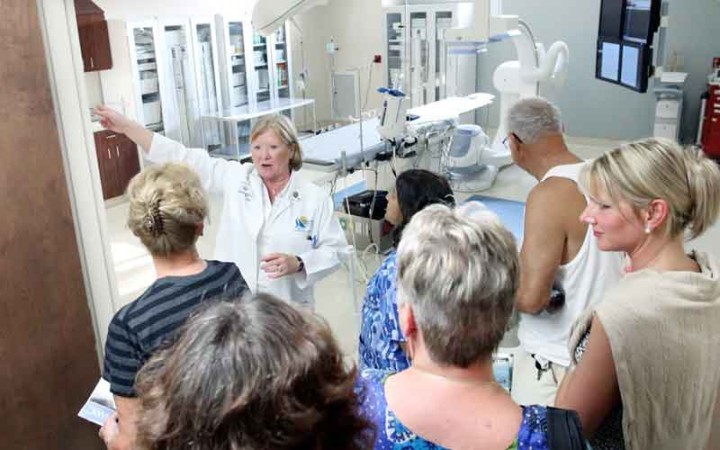SEBASTIAN — After years of preparation and meeting certification requirements, Sebastian River Medical Center opened its Interventional Cardiology Lab Wednesday. To be part of this historic moment for the hospital, over 100 people – doctors, nurses, techs, hospital administrators and patients (mostly over 60-years-old) – gathered at the hospital to see the lab and applaud the accomplishment.
Sebastian River Medical Center is now part of a growing number of hospitals that perform angioplasties while not providing back-up bypass surgery in the unlikely chance that something goes wrong during angioplasty.
To perform angioplasty, the cardiologist runs a catheter with a balloon on the end of it through blood vessels in the heart to increase blood flow. In very rare cases, patients go into cardiac arrest.
“Statistics show less than a 1 percent chance that emergency bypass surgery will be required,” said Jon Oliver, director of cardiac services at SRMC. “Besides, we won’t perform angioplasty on high-risk patients.”
But if the surgery is needed, he said, a plan is in place – a helicopter will air-lift patients to Holmes Medical Center in Melbourne for bypass surgery.
About a July 2011 article in the Journal of the American Medical Association, which said studies showed 12 percent of angioplasties were unnecessary, Cardiologist Charles Croft said: “We’re well aware of the studies that led to that article, and I can assure you all of our procedures will be based upon objective findings from testing – intravascular ultrasound, measurements of fractional blood flow and stress tests. “Yes, we have an angioplasty suite for procedures, but only for necessary procedures.”
Croft also addressed questions about what a patient should expect when angioplasty is performed in a non-emergency situation. Studies show that, while the procedure alleviates symptoms like shortness of breath and fatigue, it does not lower the risk of a heart attack.
Studies also show that a good number of patients don’t realize this limitation.
“We’re talking about more than survival here,” said Croft, who has performed thousands of angioplasties and put in stents to keep arteries open. “We’re talking about quality of life. We’re talking about helping people get up and do things.”
One of those people, Russell Frawley from Vero Lakes Estates, waited for more than an hour to congratulate Croft on the new lab. Last summer, Croft performed angioplasty on Frawley and installed a stent.
“Before, I was short of breath and took frequent naps because of fatigue. Now, I breathe so much better and I’m no longer tired,” said Frawley. “I can’t begin to say how much my life has improved.”
The day after the lab opened, said a hospital administrator, the staff would begin doing procedures.
“Pretty exciting,” said Suzanne Green, director of clinical operations.

